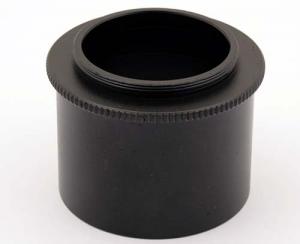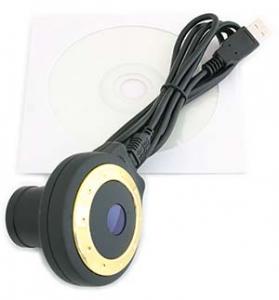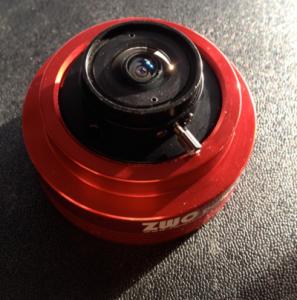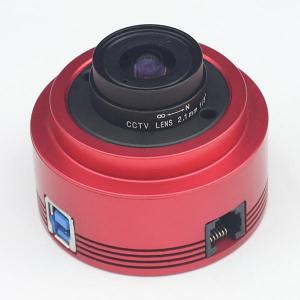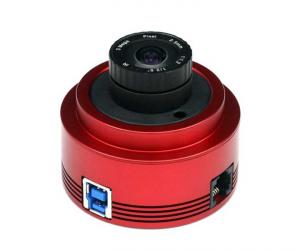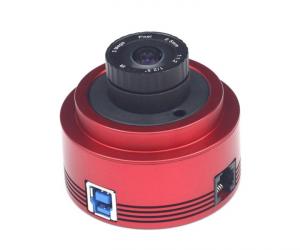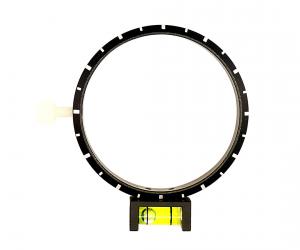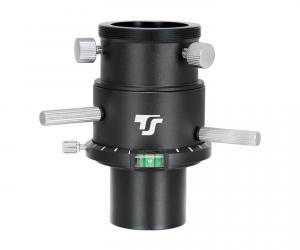- Telescopes
- Overview:
Telescopes - Achromatic Refractor
- Apochromatic Refractor
- Overview:
Apochromatic Refractor - ED Refractor - less color aberration than an achromatic
- SD APO - color free 2-element APO objective
- EDT APO - 3 element ED objective
- High End APO with 3-element APO objective - no color aberation
- Flatfield APO with flat field for Astrophotography
- All Apos and EDs from all manufacturers - large overview
- TS APO and ED from Japan with high quality optics
- Overview:
- Newtonian Telescopes
- Dobsonian Telescopes
- RC Ritchey Chretien Telescopes
- Casssegrain Telescopes
- Reflektor Telescopce with Lens Correcture
- Maksutov Cassegrain Telescopes
- GoTo Telescopes
- Solar Telescopes H-Alpha
- Overview:
- Mounts Tripods Rings Rails Power Supply ...
- Overview:
Mounts Tripods Rings Rails Power Supply ... - Mounts Equatorial with GoTo
- Mounts Equatorial without GoTo
- Mounts Azimutal with GoTo
- Mounts Azimutal without GoTo
- Mounts GoTo - Harmonic Drive
- Travel mounts for astro imaging
- Tripods Piers Polar Wedges
- Mount Control & Electronics
- Dovetail Clamps, Plates and Mount Adapters
- Tube Rings
- Power Supply
- Counterweights Balance Weights
- Mount Accessories - Other
- Overview:
- Telescope Accessories
- Overview:
Telescope Accessories - Eyepieces
- Barlows & Reducer Lenses
- Diagonal Mirrors and Prisms
- Binocular Viewers
- Finder Scopes
- Telescope Collimation and Test
- Cleaning Tools
- Transport and Storage
- Dust protection for Telescopes & Accessories
- Stray Light Protection
- Dewcaps and Heater
- Focusers, Adapters, Motorfocus
- Telescope DIY & Improvement
- Other telescope accessories
- Replacement Parts
- Overview:
- Filters
- Overview:
Filters - Color Filters and Color Filtersets
- Nebular Filters for Visual Observing
- Neutral-Density and Polfilter
- Photo Narrowband Nebular Filters
- Photo Broadband Filters
- Photo Planetary Filters
- Photo R-G-B and IR Cut Filters
- Photo - Filtersets
- Photometric Filters
- Clip Filter for DSLR Cameras
- Filter Wheels and Filterslider
- Solar Filters for white light
- Solarfilter for H-Alpha and Calcium
- Overview:
- Adaptors
- Overview:
Adaptors - Adapter 1,25" and 24,5mm
- Adapter 2"
- Adapter T2 - M42x0.75
- Adapter M48x0,75
- Adapter M54
- Adapter SC
- Adapter M63
- Adapter M68
- Adapter to other Threads
- Adapter Extensions
- Adapter camera bayonet
- Adapter Objective Filterthread
- Adapter Quick Changing , Rotation
- Adapter Eyepiece Projection
- Adapters Tilting
- Overview:
- Astrophotography and Photography
- Overview:
Astrophotography and Photography - Cooled Cameras
- Cameras without Cooling
- Deep-Sky Cameras uncooled
- Set-Offers Camera, Filter, Wheels
- Acessories for Cameras
- Travel mounts for astro imaging
- Imaging Correctors for Telescopes
- Autoguiding Cameras & Sets
- Everything for Guiding
- Focusing aids - Bahtinov mascs
- Flat Field foils and boxes
- Lenses for Cameras
- Piggyback Camera Holder
- Camera Bags, Photocases & more
- Digital Camera and Smartphone Adapter
- Other photo accessories
- Overview:
- Binoculars, Spotting Scopes, Microscopes, Range Finders
- Overview:
Binoculars, Spotting Scopes, Microscopes, Range Finders - Roof Prism Binoculars
- Binoculars with Porro prisms
- Binoculars from 100mm Aperture
- Binoculars with 1,25 inch eyepieces
- TSMX APO Binoculars
- Binoculars for Astronomy
- Binoculars Hiking Bird watching
- Monoculars - Opera Binoculars
- Accessories for Binoculars
- Spotting Scopes
- Range Finders
- Microscopy
- Bags for Phototripods & Binoculars
- Overview:
- Phototripods and Binomounts
- Books, Software
- Overview:
Books, Software - Books for Astronomy Beginners
- Star Charts and Planispheres
- Books about our Solar System
- Observing Tips for Amateurs
- Popular Astronomy Literature
- Teaching material
- Astrophotography books
- Telescopes, Observatories, Construction
- Calendars Yearbooks
- Software, Star Charts
- Books for Microscopers
- Books Nature and Animals
- Nature Photography TimeLapse
- Overview:
- Night Vision, Magnifiers, Weather, Domes & more
- Beginner Astronomy and Gift Ideas
- Second Hand & Special Offers
- New products
Manufacturer: ASI - ZWO
Product number: ZWOADC
EUR159.00new
EUR 159,00
incl. 19 % VAT (DE)
The VAT indicated refers to that applicable in Germany. After logging in, the VAT amount is adjusted to the applicable VAT of the stored delivery country. Therefore, the final price may vary accordingly.
excl. 6.95 € shipping costs (DE)
more details to the shipping costs ...Please log in to calculate shipping costs to your country.
rating: 4.0 of 5ZWO ADC Atmospheric Dispersion Corrector - T2 and 1.25" connection2
- Details..
- Technical data..
- In the box..
So what is it?
An Atmosperic Dispersion Corrector or ADC, is a clever little device which corrects the disperse effects of the earth´s atmosphere on light rays. Put simply, when you view a bright object such as a planet with a telescope, you will often see colour fringing. So a large object like Jupiter may have a red and blue fringe in addition to being distorted. This is caused by the effect the earth´s atmosphere has on the light from the object as it passes through it. The atmosphere is basically acting like a prism. This effect changes depending on how high the object is above the horizon. The lower it is the greater the effect. Because in northern Europe bright objects like planets are never that high, so we suffer from the effect more.
An ADC corrects this dispersion effect, allowing you to see and image objects free of these distortions and aberrations. No more waiting for an object to get high enough in the sky for it to offer an acceptable view. Now you can view it anytime with crystal clear quality.
How does the ZWO ADC work?
As we mentiones, when light from the planets or stars passes through the Earth´s atmosphere, it is "refracted", (deflected at an angle which is dependent on its wavelength). This effect, similar to a prism, causes a significant colour shift known as chromatic aberration. This is very detrimental to both viewing and imaging these objects.
The ADC, or atmospheric dispersion corrector, is an opto-mechanical accessory which corrects this by using the chromatic superposition of two counter rotating prisms. Its simplified operation is described by the small diagramm above.
The levers on the ADC move the counter rotating prisms and adjust the compensation from nothing to a maximum effect when the levers are 180 degrees apart.
Different wavelengths are affected more by the dispersion effect than others. The ADC makes it easy to compensate for the effect simply by adjusting the levers.
Imaging
When colour imaging a planet without an ADC, you will end up with colour fringing and distortion. Even if the appearance of this fringing and distortion is removed in processing, it has led to a loss of resolution in the image which cannot be recovered. When mono imaging, the taking of individual red, green and blue images and overlaying them helps to compensate somewhat for the image shift. However to maximise resolution of the image a luminance image should be taken. This will suffer from the same issues as a normal full colour image. The improvement to this can be seen in the pictures above.
By using an ADC the distortions and image shift problems are eliminated resulting in a massively more detailed image. When processed further, this results in a final image which is dramatically improved.
Important hint for operation:
For the correct effect, the corrector has to be properly aligned to the horizon. Usually, this is the case if both levers from the corrector are stacked parallel to the horizon as seen in the focuser.
Turning the levers by the same value, but in opposite directions, will rotate the prims so that their effects do not cancel each other out. If the image deteriorates, both levers have to be turned to the opposite direction.
Please take into account that the direction of the horizon changes during the hours when using an equatorial mounted telescope. Of course, this has to be taken into account.
An Atmosperic Dispersion Corrector or ADC, is a clever little device which corrects the disperse effects of the earth´s atmosphere on light rays. Put simply, when you view a bright object such as a planet with a telescope, you will often see colour fringing. So a large object like Jupiter may have a red and blue fringe in addition to being distorted. This is caused by the effect the earth´s atmosphere has on the light from the object as it passes through it. The atmosphere is basically acting like a prism. This effect changes depending on how high the object is above the horizon. The lower it is the greater the effect. Because in northern Europe bright objects like planets are never that high, so we suffer from the effect more.
An ADC corrects this dispersion effect, allowing you to see and image objects free of these distortions and aberrations. No more waiting for an object to get high enough in the sky for it to offer an acceptable view. Now you can view it anytime with crystal clear quality.
How does the ZWO ADC work?
As we mentiones, when light from the planets or stars passes through the Earth´s atmosphere, it is "refracted", (deflected at an angle which is dependent on its wavelength). This effect, similar to a prism, causes a significant colour shift known as chromatic aberration. This is very detrimental to both viewing and imaging these objects.
The ADC, or atmospheric dispersion corrector, is an opto-mechanical accessory which corrects this by using the chromatic superposition of two counter rotating prisms. Its simplified operation is described by the small diagramm above.
The levers on the ADC move the counter rotating prisms and adjust the compensation from nothing to a maximum effect when the levers are 180 degrees apart.
Different wavelengths are affected more by the dispersion effect than others. The ADC makes it easy to compensate for the effect simply by adjusting the levers.
Imaging
When colour imaging a planet without an ADC, you will end up with colour fringing and distortion. Even if the appearance of this fringing and distortion is removed in processing, it has led to a loss of resolution in the image which cannot be recovered. When mono imaging, the taking of individual red, green and blue images and overlaying them helps to compensate somewhat for the image shift. However to maximise resolution of the image a luminance image should be taken. This will suffer from the same issues as a normal full colour image. The improvement to this can be seen in the pictures above.
By using an ADC the distortions and image shift problems are eliminated resulting in a massively more detailed image. When processed further, this results in a final image which is dramatically improved.
Important hint for operation:
For the correct effect, the corrector has to be properly aligned to the horizon. Usually, this is the case if both levers from the corrector are stacked parallel to the horizon as seen in the focuser.
Turning the levers by the same value, but in opposite directions, will rotate the prims so that their effects do not cancel each other out. If the image deteriorates, both levers have to be turned to the opposite direction.
Please take into account that the direction of the horizon changes during the hours when using an equatorial mounted telescope. Of course, this has to be taken into account.
| Threads: | T2 male and female |
| 1.25" connections: | 1.25" male adapter on telescope side and 1.25" female adapter on eyepiece side |
| Optics: | 2 prisms |
| Coating: | FMC coating |
| Housing: | Aluminium |
Recommended accessories
Adaptors
TS-Optics Focal Adapter from 2 Inch to T2 (M42x0,75)
EUR 29,90RRP EUR 34,90you save 14.3% (EUR 5,00)
Customers who bought this product also bought...
TS-Optics 3 MP Digital Camera for Telescopes
EUR 179,00RRP EUR 269,00you save 33.5% (EUR 90,00)
ZWO Mono Astro Camera ASI120MM-S, Sensor D=6.1 mm, Pixel Size 3.75 µm
EUR 224,00RRP EUR 289,00you save 22.5% (EUR 65,00)
General Accessories
Similar Products
TS-Optics ADC Atmospheric Dispersion Corrector
EUR 154,90RRP EUR 164,00you save 5.5% (EUR 9,10)
Reviews
Written by Roland Boudry
on 2022-09-14
"Ich bin ganz zufrieden mit diesen Korrektor. Gute Kwalität. Einfache Handhabung."
Written by Carsten Jonas
on 2022-02-18
"Grade für die tiefstehenden Planeten eine echte Erleichterung zur detailreichen Beobachtung und auch sehr für Planetenvideoaufnahmen zu empfehlen."
Written by Nick Fotis
on 2021-05-23
"Bad things: no documentation at all inside the box, had to search for Internet reviews and videos Good things; it works (easier if you overexpose your target planet to become a white disk, then you check if there´s fringe color atop or below)"
Written by Georg Nyman
on 2021-04-02
"Sehr gut, gute Optik, gut zu bedienen"
Written by ANTONIO CIDADAO
on 2021-03-18
"Good for color cameras"
Written by Heiko Schmitt
on 2020-08-08
"Mir fehlen noch konkrete vergleichs-fotos, allerdings ist das Ergebnis bis jetzt sehr zufriedenstellend. Saturn vom Juli 2020: *** 10"" f/4 Newton, 512 Einzelbilder mit ZWO ASI290MC."
Written by Andreas Willi
on 2020-01-24
"funktioniert super mit meinem Evolution"
Written by Jos Lankreijer
on 2018-06-20
*****
Written by Christian Detjen
on 2018-05-14
"Wie immer; TOP!"
Written by Dominik Künzler
on 2017-08-05
"Top Qualität. Schneller Versand. Jederzeit wieder."
Written by Herbert Wallner
on 2017-04-15
"Der günstigste ADC, den ich gefunden hatte. Dennoch funktioniert er sehr gut. Ist für alle Planetenfotografierer ein Muss, zumindest in den nächsten Jahren, so lange die Planeten so niedrig stehen."
Written by Andres Sauerwald
on 2017-03-09
"Scheint gut zu sein, muss ich aber noch mehr Erfahrung mit sammeln!"
Written by Herbert Klinger
on 2016-08-09
"Der ADC funktioniert visuell z.B. am Saturn sehr gut. Die Farbsäume verschwinden und die Schärfe wird insgesamt besser. Fotografische Tests folgen erst noch. Sehe aber keinen Grund, warum der ADC dann fotografisch nicht funktionieren sollte."
Written by Reinhard Braden
on 2016-06-24
"Am 12"" Dobson nicht ganz einfach, die beste Stellung herauszufinden, aber die Wirkung ist sehr gut."
Written by Rudolf Hillebrecht
on 2016-06-13
"geht nicht mehr ohne"














